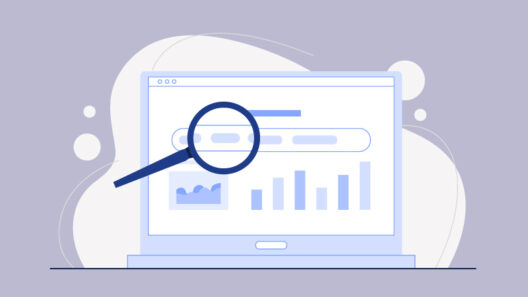SEO is Evolving Fast.
A few years ago, ranking on Google meant stuffing keywords, building links, and waiting for results.
But the SEO landscape in 2025 looks nothing like that.
Today, algorithms are smarter than ever, they understand what users want, not just what they type.
Search is now deeply personalized, powered by AI recommendations that shape every click, scroll, and search intent.
Whether it’s Google Discover, YouTube’s “For You” feed, or even ChatGPT-powered search, every digital experience is unique. And that means SEO content must adapt or disappear.
So, how can you make your content stand out when every user sees a different version of the web?
Let’s break down how content personalization in SEO works and how you can use it to rank higher in the age of AI recommendations.
What Is Content Personalization in SEO?
Content personalization in SEO means tailoring your website’s content to match the unique preferences, behaviors, and search intent of each user.
Unlike traditional SEO where you optimize for one keyword and hope everyone finds it, personalized SEO focuses on user intent and context.
That includes:
- Search history and browsing behavior
- Location and device
- Time of day and previous interactions
- Engagement patterns (clicks, scrolls, dwell time)
For example, a user in Dhaka searching for “best SEO tools” might see different results than a marketer in New York. Google adjusts the results based on what each person is most likely to find useful.
In short: personalization is SEO’s new ranking factor. It doesn’t replace keywords, but it decides which optimized content gets shown.
How AI Recommendations Are Changing Search
AI isn’t just powering ChatGPT and Gemini, it’s also running behind Google’s search engine, YouTube’s recommendations, and even Bing’s SERP layout.
Here’s how it works:
A. Understanding Intent through AI
Google’s AI models like RankBrain, BERT, and MUM analyze the meaning behind searches. They interpret language, emotion, and relationships between entities.
That means the algorithm doesn’t just look at keywords like “content personalization”, it understands the why behind the search.
B. AI-Powered Recommendations
When users interact with content, AI systems learn what they prefer.
This is why:
- Google Discover shows you articles similar to ones you’ve clicked.
- YouTube recommends SEO tutorials if you’ve been watching ranking case studies.
- Even ChatGPT gives tailored responses based on previous context.
These AI systems create micro-SERPs for every user, personalized result pages that shift depending on behavior.
To rank in this environment, your content must satisfy intent signals, not just algorithmic rules.
Why Personalized Content Wins SEO in 2025
Personalized SEO isn’t just a nice-to-have, it’s a conversion-driving powerhouse.
A. Higher Engagement Metrics
Personalized pages reduce bounce rates and increase dwell time because users find exactly what they want.
And since Google uses engagement metrics as ranking signals, personalization directly boosts your SEO performance.
B. Relevance = Rankings
Search engines reward relevance.
AI personalization ensures your content is relevant for each individual user, increasing your chance to appear in “for you” feeds, Discover, and context-aware SERPs.
C. EEAT Meets Experience
Google’s EEAT framework (Experience, Expertise, Authoritativeness, Trustworthiness) now includes “Experience.”
That means content demonstrating first-hand experience or real-world examples performs better. Personalized experiences amplify that perceived authenticity.
How to Optimize for AI-Driven Personalization
Now, let’s get practical.
Here’s how to future-proof your content strategy for AI-powered personalization.
A. Build Content Around Intent Clusters
Instead of focusing on single keywords, organize your content around intent groups; informational, navigational, and transactional.
Example:
If your main keyword is “content personalization,” create a cluster like this:
- What is content personalization? (informational)
- Best tools for content personalization (commercial)
- How to use AI for SEO personalization (transactional)
Google will connect your cluster pages semantically, helping you rank for multiple user journeys.
B. Segment Your Audience Using Analytics
Use GA4 and Search Console to identify behavior segments; returning vs new visitors, mobile vs desktop, or by location.
Then, tweak your on-page content accordingly:
- Show local CTAs for region-specific traffic
- Adjust tone or examples based on returning visitor interests
- Highlight trending topics for users coming from Discover or social
Personalization doesn’t always mean heavy coding, sometimes it’s smart segmentation and messaging.
C. Use Behavioral Data for Optimization
Tools like Hotjar, Microsoft Clarity, or CrazyEgg show how users interact with your content.
Use heatmaps and scroll depth data to identify:
- Where engagement drops
- Which sections attract attention
- How to restructure pages for better UX
AI-based SEO thrives on engagement signals, so optimizing user experience = optimizing rankings.
D. Leverage Structured Data & Semantic SEO
Structured data helps search engines understand context.
For personalization, focus on:
- ‘Article’ schema
- ‘FAQPage‘ for snippet visibility
- ‘HowTo’ for interactive search
- ‘Person’ or ‘Organization’ for author authority
Semantic markup improves how AI interprets your content; critical for personalized search results.
E. Create Dynamic Content Recommendations
Implement algorithms or plugins that suggest related content automatically.
For WordPress, tools like Jetpack Related Posts or Contextual Related Posts use engagement history to personalize suggestions.
This keeps users on your site longer, boosting dwell time and topical authority.
F. Use AI to Personalize On-Site Experience
You can use AI tools to automatically tailor CTAs, blog recommendations, or even paragraph structures based on visitor data.
For instance:
- HubSpot Smart Content adjusts text by audience type.
- ChatGPT API can create real-time, dynamic responses.
- Optimizely personalizes on-page elements for conversion.
These small touches create a “this was written for me” feeling, the secret sauce of modern SEO.
Tools That Power SEO Personalization
Here are the top tools helping SEOs adapt to AI-driven personalization:
| Tool | Purpose | Best Use Case |
|---|---|---|
| SurferSEO | NLP-based content optimization | Craft AI-aligned copy using intent phrases |
| Clearscope / MarketMuse | Content gap & topic mapping | Build topical authority around user intent |
| HubSpot Smart Content | Personalized CTAs and pages | Dynamically change content per user segment |
| ChatGPT / Jasper | AI content personalization | Generate adaptive intros, FAQs, meta text |
| Hotjar / Clarity | Behavioral insights | Track how users engage with your pages |
| Google Optimize (Legacy) | A/B testing & personalization | Test different variations for different user types |
Combining these tools builds a robust personalization ecosystem that supports SEO performance.
The Future: Predictive SEO and AI-First Rankings
The next evolution isn’t just personalization, it’s prediction.
AI systems now anticipate what users will want before they search.
Google’s predictive Discover feed and AI-generated overviews are early examples of predictive SEO.
What’s Coming Next
- Searchless discovery: Users find content without searching, via recommendations, voice assistants, and AI agents.
- Entity-first indexing: Google ranks based on topic relationships, not keywords.
- Experience-driven signals: Engagement, satisfaction, and content freshness will outweigh backlinks.
To stay ahead, your content strategy should focus on:
- Publishing content that anticipates user intent
- Updating regularly for freshness
- Using AI tools to map content gaps before they trend
SEO in 2025 isn’t about ranking once, it’s about constantly re-earning visibility in an evolving, AI-driven ecosystem.
Real-World Example: How Personalization Drives SEO Wins
Let’s look at how personalization impacts visibility in real terms.
A SaaS company optimized its blog for “AI content strategy.”
Instead of one generic post, they:
- Created segmented versions based on industry (marketing, finance, eCommerce)
- Used GA4 data to show industry-specific CTAs
- Updated recommendations dynamically based on user category
Result?
CTR increased by 47%, dwell time by 32%, and conversions by 29%, all from personalization.
That’s the tangible ROI of combining SEO with AI personalization.
Key Takeaways: Ranking in the Age of AI
- Personalization is SEO’s new competitive edge.
- AI recommendations prioritize engagement and relevance over keyword density.
- Focus on intent clusters, structured data, and dynamic user experiences.
- Use behavioral analytics to adapt your content in real time.
- Invest in AI-driven tools that help automate personalization.
Conclusion: The New SEO Mindset
SEO is no longer about chasing the algorithm, it’s about aligning with the user.
The more you understand user behavior, preferences, and search journeys, the better your content will rank in AI-powered ecosystems like Google Discover, Gemini Search, and Bing CoPilot.
Content personalization is not a trick, it’s the evolution of SEO itself.
So, the question is:
Are you still optimizing for keywords… or for people?




